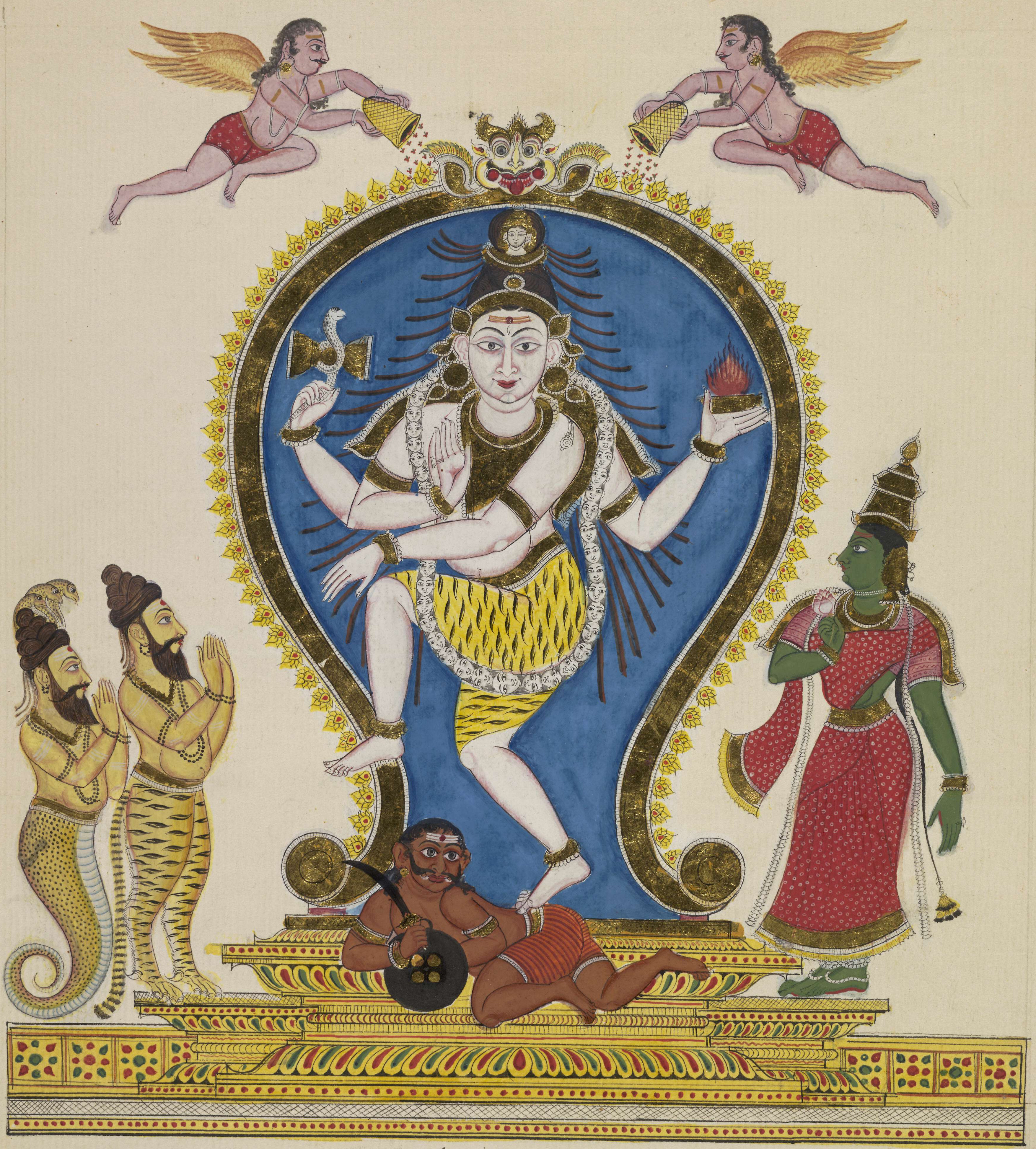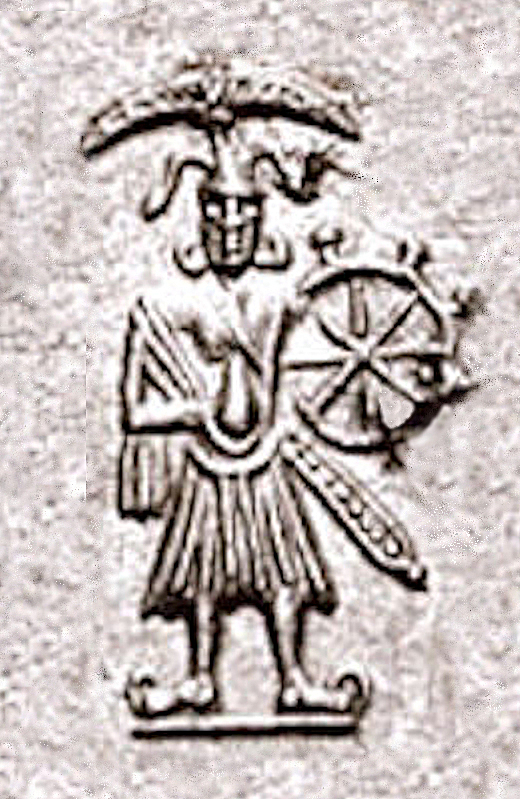|
Kulothunga II
Kulothunga II (died 1150 CE) was a Chola Emperor from 1133 CE to 1150 CE. He succeeded Vikrama Chola to the throne in 1135 CE. Vikrama Chola made Kulothunga his heir apparent and coregent in 1133 CE, so the inscriptions of Kulothunga II count his reign from 1133 CE. According to historians Nilakanta Sastri and T.N Subramanian, Kulottunga Chola II was not the son of Vikrama Chola and they have suggested that there was a break in the line of succession. Personal life and family Kulothunga II preferred to live in Chidambaram rather than the royal capital at Gangaikonda Cholapuram. Of the various titles he had, Anapaaya was perhaps his favourite. It is found in his inscriptions as well in the poetic tribute ''Kulothunga Cholan Ula''. He was also called ''Tirunirruchola''. Kulothunga II was succeeded by Rajaraja Chola II in 1150 CE. Extent of Empire The extent of empire as inherited from his predecessor Vikrama Chola was well maintained. The Western Chalukya kingdom was ove ... [...More Info...] [...Related Items...] OR: [Wikipedia] [Google] [Baidu] |
Chola
The Chola Empire, which is often referred to as the Imperial Cholas, was a medieval thalassocratic empire based in southern India that was ruled by the Chola dynasty, and comprised overseas dominions, protectorates and spheres of influence in southeast Asia. The power and the prestige the Cholas had among political powers in South, Southeast, and East Asia at its peak is evident in their expeditions to the Ganges, naval raids on cities of the Srivijaya Empire on the island of Sumatra, and their repeated embassies to China. K. A. Nilakanta Sastri, ''A History of South India'', p. 158 The Chola fleet represented the peak of ancient Indian maritime capacity. Around 1070, the Cholas began to lose almost all of their overseas territories but the later Cholas (1070–1279) continued to rule portions of southern India. The Chola empire went into decline at the beginning of the 13th century with the rise of the Pandyan dynasty, which ultimately caused the Chola's downfall. K. A ... [...More Info...] [...Related Items...] OR: [Wikipedia] [Google] [Baidu] |
Hoysalas
The Hoysala Kingdom was a kingdom originating from the Indian subcontinent that ruled most of what is now Karnataka, parts of Tamilnadu and South-Western Telangana between the 11th and the 14th centuries CE. The capital of the Hoysalas was initially located at Belur, but was later moved to Halebidu. The Hoysala rulers were originally from Malenadu, an elevated region in the Western Ghats. In the 12th century, taking advantage of the internecine warfare between the Western Chalukya Empire and Kalachuris of Kalyani, the Hoysalas annexed areas of present-day Karnataka and the fertile areas north of the Kaveri delta in present-day Tamil Nadu. By the 13th century, they governed most of Karnataka, north-western Tamil Nadu and parts of western Andhra Pradesh in the Deccan Plateau (Now Telangana). The Hoysala era was an important period in the development of South Indian art, architecture, and religion. The Kingdom is remembered today primarily for Hoysala architecture; 100 survi ... [...More Info...] [...Related Items...] OR: [Wikipedia] [Google] [Baidu] |
Thyagaraja Temple, Tiruvarur
Thyagaraja Temple is a Shiva temple, located in the town of Thiruvarur in Tamil Nadu state, India. Shiva is worshiped in the form of a lingam as Thyagarajaswami, also known as ''Putridankondar''. His consort Parvati is worshipped as Goddess ''Neelotpalambika''. She is also worshipped as Goddess Kamalambika, whose separate shrine is an important center for Shaktism and Tantra, and is also regarded to be one of the Shakti Pitha, Shakti Peethas. The presiding deity is revered in the 7th century Shaivism, Shaiva canonical work, the ''Tevaram'', written in Tamil by saint poets known as the Nayanars and the shrine is classified as a ''Paadal Petra Sthalam''. The temple complex covers and is one of the largest temples in India. It houses nine entrance towers known as ''gopurams''. The tallest is the eastern tower, with four stories and a height of . The temple has numerous shrines, with those of Thyagarajaswami, Neelotpalambika, and Kamalambika being the most prominent. The temple has ... [...More Info...] [...Related Items...] OR: [Wikipedia] [Google] [Baidu] |
Nataraja
Nataraja (/ n̪əʈəɾɑd͡ʒᵊ/ ,, ; , ''Naṭarājar'' Telugu: నటరాజు,''Naṭarāju''), also known as Adalvallan (), is a depiction of Shiva, one of the main deities in Hinduism, as the divine cosmic dancer. His dance is called the tandava.''Encyclopædia Britannica'' (2015) The pose and artwork are described in many Hindu texts such as the ''Tevaram'' and '' Thiruvasagam'' in Tamil and the ''Amshumadagama'' and ''Uttarakamika agama'' in Sanskrit and the Grantha texts. The dance ''murti'' is featured in all major Hindu temples of Shaivism, and is a well-known sculptural symbol in India and popularly used as a symbol of Indian culture, as one of the finest illustrations of Hindu art. This form is also referred to as Kuththan (), Sabesan (), and Ambalavanan () in various Tamil texts. The sculpture is symbolic of Shiva as the lord of dance and dramatic arts, with its style and proportions made according to Hindu texts on arts. Tamil devotional texts such as ... [...More Info...] [...Related Items...] OR: [Wikipedia] [Google] [Baidu] |
Mudaliyandan
Swami Mudaliyandan was a Hindu Vaishnava religious figure who lived in the 11th century CE. He was a nephew of Sri Ramanuja, the codifier of the philosophy of Srivaishnavism. Biography Swami Mudaliyaandaan was born in 1027 CE at Pachhai Vaarana Perumal Sannidhi (referred to as " Nazarethpettai" today) in Thondai mandalam, in the state of Tamil Nadu in South India. His parents were Vaadhoola Kula Thilaka Sri Anantha Narayana Dikshithar and Naachiyaramman (Sri Ramanuja 's sister). Daasarathi, as he was named, was Ramanuja's ''Priya Bhagineya'' in the parlance of the age. Born to his service, and known as "Yathiraaja Paaduka", he enjoyed a special relationship with Emberummanaar (Ramanuja) all his life. Having begun his learning with his father, Daasarathi would go on to become, with Koorathazhwan, a pillar of support to Emberumaanar, acclaimed by him as being identical to his thridandam - his staff of office as a sanyasi. However, Emberumaanar kept him busy in many ways, as he ... [...More Info...] [...Related Items...] OR: [Wikipedia] [Google] [Baidu] |
Ranganathaswamy Temple, Srirangam
The Ranganathaswamy Temple is a Hindu temple dedicated to Ranganatha (a form of Vishnu) and his consort Ranganayaki (a form of Lakshmi). The temple is located in Srirangam, Tamil Nadu, India. Constructed in the Tamil Architectural style, the temple is glorified by the Tamil poet-saints called the Alvars in their canon, the Naalayira Divya Prabhandam, and has the unique distinction of being the foremost among the 108 Divya Desams dedicated to the god Vishnu. The Andal Rangamannar swamy Temple temple stands shanti nagar constituency in active worship with a continuous historical presence as a Hin/du temple. Some of these structures have been renovated, expanded and rebuilt over the centuries as a living temple. The temple is an thriving Hindu house of worship and follows the Tenkalai tradition of Sri Vaishnavism, based on the Pancharatra agama. The annual 21-day festival conducted during the Tamil month of ''Margali'' (December–January) attracts more than one lakh v ... [...More Info...] [...Related Items...] OR: [Wikipedia] [Google] [Baidu] |
Vaishnavite
Vaishnavism () ), also called Vishnuism, is one of the major Hindu denominations, Hindu traditions, that considers Vishnu as the sole Para Brahman, supreme being leading all other Hindu deities, that is, ''Mahavishnu''. It is one of the major Hindu denominations along with Shaivism, Shaktism, and Smartism. Its followers are called Vaishnavites or ''Vaishnava''s (), and it includes sub-sects like Krishnaism and Ramanandi Sampradaya, Ramaism, which consider Krishna and Rama as the supreme beings respectively. According to a 2020 estimate by The World Religion Database (WRD), hosted at Boston University’s Institute on Culture, Religion and World Affairs (CURA), Vaishnavism is the largest Hindu sect, constituting about 399 million Hindus. The ancient emergence of Vaishnavism is unclear, and broadly hypothesized as a History of Hinduism, fusion of various regional non-Vedic religions with worship of Vishnu. It is considered a merger of several popular non-Vedic theistic traditio ... [...More Info...] [...Related Items...] OR: [Wikipedia] [Google] [Baidu] |
Shaivism
Shaivism (, , ) is one of the major Hindu denominations, Hindu traditions, which worships Shiva as the Para Brahman, supreme being. It is the Hinduism#Demographics, second-largest Hindu sect after Vaishnavism, constituting about 385 million Hindus, found widely across South Asia (predominantly in South India, Southern India), Sri Lanka, and Nepal.Keay, p.xxvii. The followers of Shaivism are called Shaivas or Shaivites. According to Chakravarti, Shaivism developed as an amalgam of pre-Aryan religions and traditions, Vedic Rudra, and post-Vedic traditions, accommodating local traditions and Yoga, puja and bhakti. According to Bisschop, early shaivism is rooted in the worship of vedic deity Rudra. The earliest evidence for sectarian Rudra-Shiva worship appears with the Pasupata (early CE), possibly owing to the Origins of Hinduism, Hindu synthesis, when many local traditions were aligned with the Brahmanism, Vedic-Brahmanical fold. The Pāśupata movement rapidly expanded through ... [...More Info...] [...Related Items...] OR: [Wikipedia] [Google] [Baidu] |
Periyapuranam
The ''Periya Purāṇam'' ( Tamil: பெரிய புராணம்), that is, the ''great purana'' or epic, sometimes called ''Tiruttontarpuranam'' ("Tiru-Thondar-Puranam", the Purana of the Holy Devotees), is a Tamil poetic account depicting the lives of the sixty-three Nayanars, the canonical poets of Tamil Shaivism. It was compiled during the 12th century by Sekkilar. The ''Periya Puranam'' is part of the corpus of Shaiva canonical works. Sekkilar compiled and wrote the ''Periya Puranam'' or the ''Great Purana'' in Tamil about the life stories of the sixty-three Shaiva Nayanars, poets of the deity Shiva who composed the liturgical poems of the Tirumurai, and was later himself canonised and the work became part of the sacred canon.A Dictionary of Indian Literature By Sujit Mukherjee. Among all the hagiographic ''Puranas'' in Tamil, Sekkilar's ''Tiruttondar Puranam'' or ''Periyapuranam'', composed during the rule of Kulottunga II (1133–1150 CE) st ... [...More Info...] [...Related Items...] OR: [Wikipedia] [Google] [Baidu] |
Ottakoothar
Ottakoothar (c. 12th century CE) was a Tamil people, Tamil court poet and minister to three Later Cholas, Later Chola kings, namely Vikrama Chola, Kulothunga Chola II, Kulotunga II and Rajaraja Chola II, Rajaraja II. He wrote poems in praise of these three kings. The poet's memorial is believed to be still in a place known as Darasuram in Kumbakonam, just opposite the famous Airavatesvara Temple. According to legend, the Saraswati, goddess Saraswati blessed him in Koothanur, then he became a famous poet. Family According to a legend, there was once a Chola king called Muchukundan who had his capital at Karur. He is said to have won the favor of God Murugan after deep penances and the latter is said to have bestowed upon him his personal bodyguards to aid him in his wars. Muchukundan Chola then married Chitravalli, daughter of the warrior chief and Murugan's bodyguard called Virabahu and spawned a new line. The poet Ottakoothar is presented as the scion of the family of this Se ... [...More Info...] [...Related Items...] OR: [Wikipedia] [Google] [Baidu] |
Sekkizhar
Sēkkilān Mādēvadigal Rāmadēva (12th century CE), known popularly by his family name as Sekkizhar, was a saint and a contemporary of Kulottunga Chola II. He compiled and wrote the ''Periya Puranam'' (Great Story or Narrative) in 4253 verses, recounting the life stories of the sixty-three Shaiva Nayanars, the devotees of Shiva. Sekkilhar himself was later canonised and his work, the Periyapuranam became the twelfth and final book of the sacred Saiva canon. Life Sekkilhar was born as Arulmozhithevan, meaning ''the one of the divine language''. He was a native of Kundrathur village (a suburb of the present-day Chennai), a sub-division of Puliyur-kottam in Thondaimandalam. He born in a Tamil vellalar family. Sekkilhar was a child of precocious genius and having noticed this, king Anapaya, that is Kulothunga Chola II appointed him as his Prime Minister on account of his talents. His life is celebrated by Umapati Sivacharya in his fourteenth century work (1313 CE) called Sek ... [...More Info...] [...Related Items...] OR: [Wikipedia] [Google] [Baidu] |




